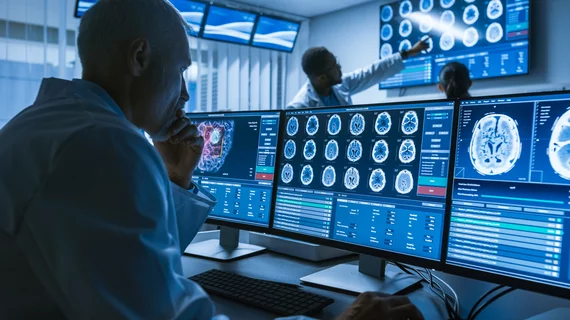Stronger report wording, direct calls to referrers help boost outpatients’ follow-up imaging odds
Only about 65% of patients actually receive recommended follow-up imaging in the outpatient setting, but a few factors can improve this number, experts wrote Monday in JACR [1].
In particular, reports with stronger wording and nonconditional follow-up recommendations were found to be followed more frequently. Imaging follow-through occurred faster in cases where the radiologist directly communicated with referrers, patients did not have a previous cancer history, or there was no specified deadline for the next step.
“When radiologists feel that follow-up of a finding is mandatory, they should use the term ‘strongly recommended,’” Hadiseh Kavandi, MD, with the Department of Radiology Beth Israel Deaconess Medical Center in Boston, and co-authors advised. “In addition, a direct phone call to the provider will help ensure timely follow-up.”
For the study, Kavandi et al. analyzed data from a single large academic medical center located in an urban setting. They performed a search for all CT, ultrasound and MRI reports containing the word “recommend” (and any synonyms, such as “advise” or “consider”), written during a period in March 2019. Both inpatient and ED reports were excluded from the analysis. This query returned a total of 255 reports, with recommended follow-up imaging occurring in less than two-thirds of such instances.
Providers saw things through more frequently when a radiologist used stronger wording (83% of the time) versus the opposite (17%). Kavandi and co-authors also found a median follow-up time of 28 days for patients without a known history of cancer compared to 82 for those with such a history (50 days was the overall median time). The team unearthed large follow-up gaps when comparing patients whose radiologist communicated directly with their referring provider (28 days vs. 70 days without communication) and for reports in which a specific follow-up interval was provided (82.5 days vs. 21 days without one).
“Strategies to make radiology recommendations more uniform are another potential way to improve the rate of follow-up adherence while avoiding the overuse of imaging,” the authors noted. “Changing the radiologists’ reporting to decrease the variations in follow-up recommendations is challenging and may require multiple interventions. In our institution, we have implemented standardized follow-up recommendations for a variety of indications, such as pancreatic cysts, pulmonary nodules, and visceral aneurysms. However, this study was focused on nonroutine follow-up recommendations for which standardization is difficult to achieve.”
Increased use of imaging has led to a corresponding uptick in the detection of incidental findings across the specialty, the authors noted. Previous studies have found that upward of 37% of radiology reports contain recommendations for additional imaging, but follow-up does not always occur. This can lead to possible delays in diagnosis and treatment, poor outcomes and possible malpractice lawsuits, Kavandi et al. wrote.

